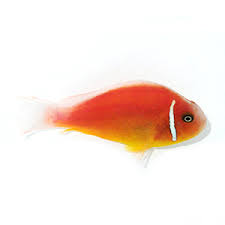1. The Global Dominance of Coffee vs. Tea

Coffee and tea are the two most consumed beverages in the world, each with a strong cultural and economic presence. While coffee dominates in Western markets, tea holds a significant share in Asia and parts of the Middle East. Chinese fresh tea, known for its rich flavors, health benefits, and traditional heritage, is seeking to expand its influence globally. However, the question remains: Can Chinese fresh tea compete with coffee in terms of market size, popularity, and consumer preference?
Market Comparison: Coffee vs. Tea
- Global coffee consumption: Over 10 million metric tons of coffee are consumed annually, with countries like the United States, Brazil, and Europe leading the market.
- Global tea consumption: While tea consumption is high, processed and mass-market teas (black, green, and herbal tea bags) dominate sales, whereas fresh tea remains a niche product outside of China.
If Chinese fresh tea wants to compete with coffee, it must address consumer habits, accessibility, and convenience while leveraging its unique selling points.
2. The Strengths of Chinese Fresh Tea
A. Health Benefits and Wellness Trends
One of the biggest advantages of Chinese fresh tea over coffee is its health benefits. As global consumers become more health-conscious, tea is increasingly seen as a superior alternative to coffee.
- Lower caffeine levels: Unlike coffee, which can lead to jitters and caffeine crashes, fresh tea provides a gentler energy boost.
- Rich in antioxidants: Chinese green teas, such as Longjing (Dragon Well) and Biluochun, contain catechins and polyphenols that support heart health and reduce oxidative stress.
- Supports digestion and metabolism: Oolong teas, like Tieguanyin, are known for aiding digestion and promoting weight loss, a feature coffee lacks.
As more consumers prioritize wellness and natural products, Chinese fresh tea has the potential to capitalize on this trend and challenge coffee’s dominance.
B. Cultural and Lifestyle Appeal
Tea is deeply ingrained in Chinese culture and has a strong storytelling element that appeals to premium and experience-driven consumers.
- Traditional tea ceremonies offer a luxury and mindfulness experience, attracting a growing audience in the West and affluent urban areas.
- Fresh tea’s diverse flavor profiles (from floral Jasmine to earthy Pu-erh) provide a sensory experience unmatched by coffee.
- The slow tea-drinking ritual aligns with stress relief and self-care trends, contrasting coffee’s fast-paced consumption habit.
To truly compete with coffee, Chinese fresh tea must find ways to modernize without losing its heritage.
3. Challenges Chinese Fresh Tea Faces Against Coffee
A. Consumer Habits and Daily Routines
One of the biggest obstacles to Chinese fresh tea competing with coffee is deeply ingrained consumer habits.
- Coffee culture is associated with productivity, making it a default morning drink in many countries.
- Espresso-based drinks (like lattes and cappuccinos) are popular in cafes, whereas fresh tea is often seen as a leisure or wellness beverage rather than a functional one.
- Ready-to-drink (RTD) coffee is widely available, while fresh tea requires more preparation and time, which does not fit into fast-paced lifestyles.
Unless fresh tea finds a way to integrate into daily routines like coffee, it will struggle to compete on a global scale.
B. Convenience and Accessibility
Coffee has dominated international markets through convenience-focused products such as:
- Instant coffee (e.g., Nescafé, Starbucks VIA)
- Capsule-based espresso machines (Nespresso, Keurig)
- Bottled and canned coffee drinks (Starbucks RTD, Dunkin’ iced coffee)
By contrast, Chinese fresh tea lacks widespread convenience formats.
- Loose-leaf tea requires steeping and careful temperature control, making it less accessible for busy consumers.
- RTD fresh tea options are limited outside China, whereas bottled iced teas are usually mass-produced with lower-quality tea leaves.
- Tea shops and cafes are still niche compared to coffee chains like Starbucks and Costa Coffee.
To compete, the Chinese fresh tea industry must innovate convenient and portable formats without compromising quality.
4. The Rise of Tea-Based Alternatives in the Coffee Market
Despite coffee’s dominance, tea-based alternatives are gaining traction in cafes and supermarkets.
A. Tea Lattes and Specialty Drinks
- Matcha lattes, Hojicha lattes, and tea-based macchiatos have become trendy, showing that consumers are open to tea-based coffee alternatives.
- Milk tea (Bubble tea) chains like HeyTea and Nayuki are already proving that tea can be a strong competitor in the beverage market.
- Cold brew teas and nitro teas are gaining popularity as refreshing and sophisticated alternatives to iced coffee.
By promoting premium, modernized tea-based beverages, Chinese fresh tea brands can target younger consumers who are willing to explore new flavors.
5. Strategies for Chinese Fresh Tea to Compete with Coffee
A. Expanding into Coffee-Drinking Markets
For Chinese fresh tea to challenge coffee, it must strategically enter Western and coffee-dominant markets through:
- Partnerships with coffee chains to introduce tea-based drinks (e.g., Starbucks’ introduction of Chinese tea varieties).
- Opening premium tea shops in major cities with modern, Instagram-friendly branding.
- Selling high-quality fresh tea in supermarkets alongside coffee products to increase visibility.
B. Innovation in Convenience and Packaging
To match coffee’s accessibility, fresh tea brands need to focus on:
- Single-serve tea pods and capsules compatible with Nespresso or Keurig machines.
- Instant fresh tea powders that dissolve easily in hot or cold water.
- Bottled, high-quality fresh teas without artificial flavors, targeting health-conscious consumers.
C. Leveraging Digital Marketing and Social Media
Coffee brands dominate through strong digital marketing, and tea brands must do the same.
- Influencer marketing: Collaborating with wellness, fitness, and lifestyle influencers.
- Social media campaigns: Promoting fresh tea as a stylish, health-conscious alternative to coffee.
- E-commerce platforms: Selling fresh tea directly to consumers through Alibaba, TikTok Shop, and Amazon.
6. The Future of Chinese Fresh Tea vs. Coffee
While coffee remains the global leader, Chinese fresh tea is making significant strides in capturing new markets. The key to competition lies in:
- Modernization without losing tradition
- Convenience-focused product development
- Strategic international expansion
Chinese fresh tea may not fully replace coffee, but it has the potential to become a serious competitor, especially as consumers look for healthier, diverse, and premium beverage experiences.
If executed correctly, Chinese fresh tea could carve out a strong, competitive position alongside coffee in the global market.

Leave a Reply